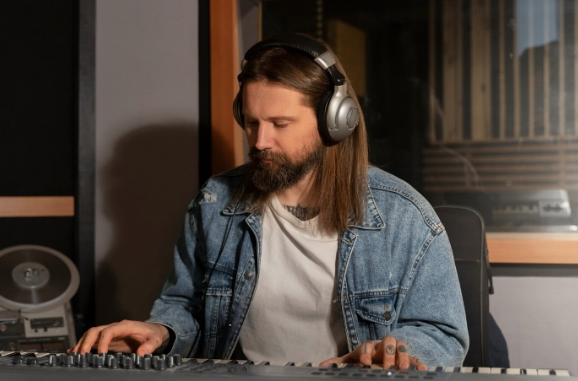In the world of music production, beat making is a fundamental skill that forms the backbone of many genres, from hip-hop and electronic dance music to pop and R&B. A beat maker is a creative individual who specializes in crafting rhythmic patterns, drum sequences, and musical loops to create the foundation of a song. This article will delve into the art and science of beat making, exploring the tools, techniques, and creative process behind this essential aspect of music production.
Evolution of Beat Making
Beat making has a rich history that traces back to the early days of hip-hop culture in the 1970s. In the streets of New York City, pioneering DJs and producers used turntables and drum machines to create rhythmic patterns by manipulating vinyl records and drum samples. This innovative approach laid the foundation for modern beat making techniques and inspired generations of musicians to experiment with new sounds and styles.
Over the years, advancements in technology have revolutionized the way beats are created. From the classic MPC drum machines of the 1980s to the sophisticated software programs and digital audio workstations (DAWs) available today, beat makers now have a vast array of tools at their disposal to sculpt and shape their sonic creations.
The Role of a Beat Maker
A beat maker plays a crucial role in the music production process, as they are responsible for setting the tempo, groove, and feel of a song. By layering drum sounds, percussion elements, basslines, and melodic loops, a beat maker creates a cohesive rhythmic structure that serves as the canvas for other musical elements to be added.
In addition to crafting the rhythmic foundation of a track, beat makers often collaborate with songwriters, vocalists, and instrumentalists to bring their musical vision to life. Whether working in a professional recording studio or a home setup, beat makers use their technical skills and creative instincts to produce high-quality beats that resonate with listeners.
Tools of the Trade
One of the most important tools for a beat maker is the digital audio workstation (DAW), which is a software program that allows users to record, edit, and arrange audio tracks. Popular DAWs such as Ableton Live, FL Studio, Logic Pro, and Pro Tools provide a comprehensive set of features and functionalities that enable beat makers to manipulate sounds with precision and flexibility.
In addition to a DAW, beat makers rely on a variety of hardware and software tools to create their beats. Drum machines, MIDI controllers, synthesizers, and sample libraries are often used to add texture, depth, and dynamics to a beat. Many beat makers also use plugins and effects processors to sculpt the sound of individual elements within a beat and enhance the overall production quality.
The Creative Process
The creative process of beat making is a highly individual and intuitive journey that varies from artist to artist. Some beat makers start with a specific musical idea or concept in mind, while others prefer to experiment with different sounds and textures until they find a groove that resonates with them.
One common approach to beat making is to begin with the rhythm, laying down a drum pattern or loop that serves as the foundation of the beat. From there, beat makers add melodic elements, basslines, and other instrumentation to build upon the rhythmic structure and create a dynamic and engaging composition.
Throughout the creative process, beat makers often draw inspiration from a wide range of sources, including other music genres, visual art, nature, and personal experiences. By staying open to new ideas and embracing experimentation, beat makers are able to push the boundaries of their creativity and explore new sonic possibilities.
The Impact of Beat Making
Beat making has had a profound impact on the music industry, influencing the sound and style of countless artists and genres. From the iconic drum patterns of classic hip-hop tracks to the intricate electronic beats of modern pop productions, beats play a central role in shaping the sonic landscape of contemporary music.
In addition to its artistic significance, beat making has also become a powerful tool for self-expression and cultural empowerment. Many beat makers use their craft to tell stories, convey emotions, and address social issues, creating beats that resonate with listeners on a deep and personal level.
As the music industry continues to evolve and embrace new technologies, beat making remains a dynamic and vibrant art form that continues to inspire and innovate. Whether you’re a seasoned producer or a budding musician, exploring the world of beat making can open up a world of possibilities and creative opportunities.
Conclusion
In conclusion, beat making is a multifaceted and dynamic art form that combines technical skill, creative vision, and personal expression. From its humble beginnings in the streets of New York City to its current status as a global phenomenon, beat making has evolved into a powerful medium for musical innovation and cultural storytelling.
Whether you’re a professional producer, an aspiring beat maker, or simply a music enthusiast, the world of beat making offers a wealth of opportunities for exploration, experimentation, and creativity. By understanding the tools, techniques, and creative process behind beat making, you can unlock your full potential as a music producer and contribute to the ever-evolving landscape of contemporary music.
So, the next time you find yourself tapping your feet to a catchy rhythm or nodding your head to a funky beat, remember the artistry and craftsmanship that goes into creating those infectious grooves. Beat making is more than just a skill – it’s a passion, a lifestyle, and a powerful form of artistic expression that continues to inspire and captivate audiences around the world.




